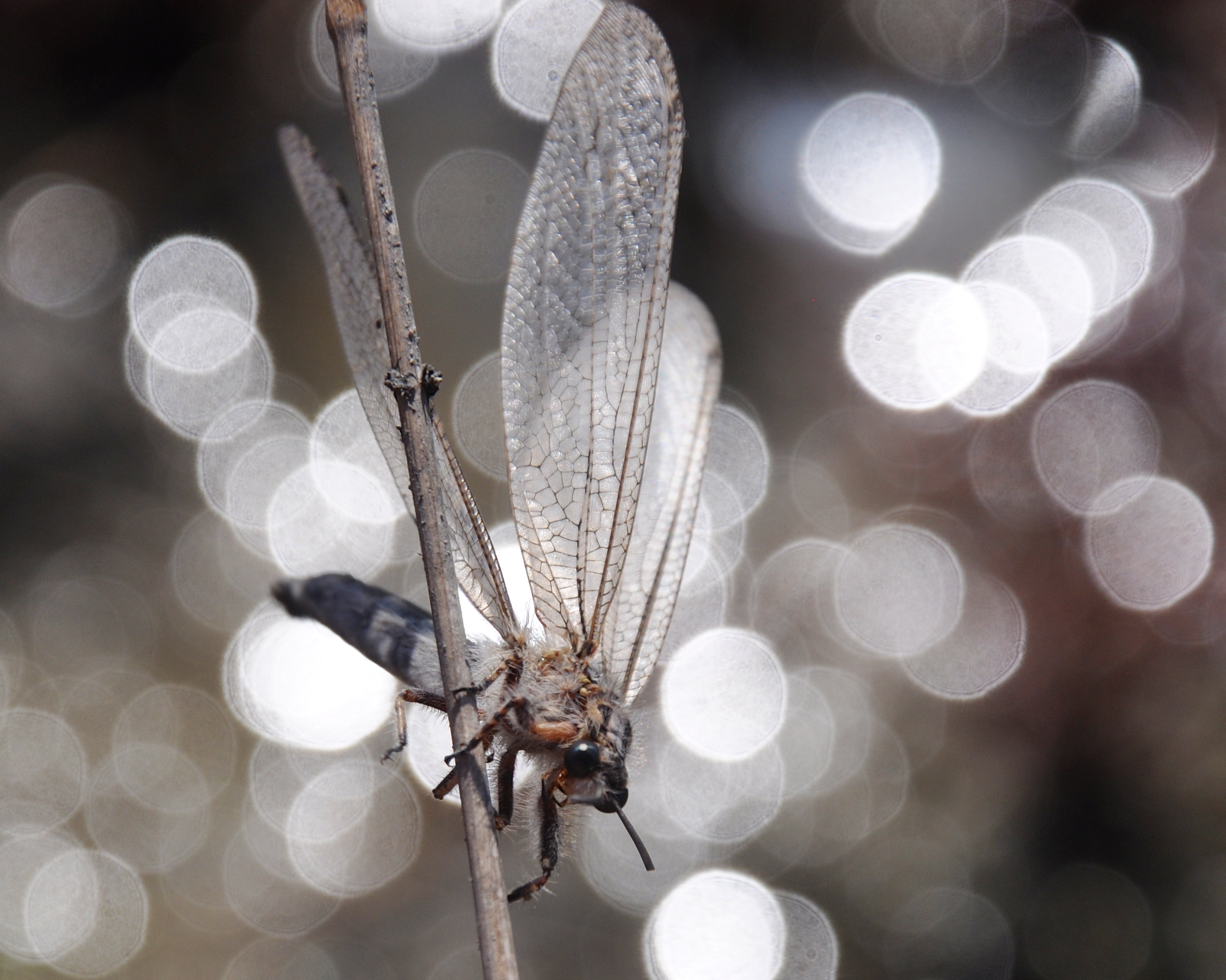|
Acanthaclisini
Acanthaclisini is a tribe in the antlion subfamily Acanthaclisinae. The larvae of most species live in open tracts of fairly deep sand, and do not construct pitfall traps. They burrow beneath the surface of the sand which needs to be deep enough to allow temperature regulation, concealment from predators and space to hunt prey. Many hunt both on the soil surface and beneath it. Genera These 16 genera belong to the tribe Acanthaclisini: * '' Acanthaclisis'' Rambur, 1842 * '' Arcuaplectron'' New, 1985 * ''Centroclisis'' Navás, 1909 * ''Cosina'' Navás, 1912 * '' Fadrina'' Navás, 1912 * '' Heoclisis'' Navás, 1923 * '' Jaya'' Navás, 1912 * '' Madrastra'' Navás, 1912 * '' Mestressa'' Navás, 1914 * '' Paranthaclisis'' Banks, 1907 * '' Phanoclisis'' Banks, 1913 * '' Stiphroneura'' Gerstaecker, 1885 * '' Synclisis'' Navás, 1919 * '' Syngenes'' Kolbe, 1897 * ''Vella'' Navas, 1913 * '' Vellasa'' Navás, 1924 i g Data sources: i = ITIS, c = Catalogue of Life, g = GBIF, b = Buggu ... [...More Info...] [...Related Items...] OR: [Wikipedia] [Google] [Baidu] |
Acanthaclisini
Acanthaclisini is a tribe in the antlion subfamily Acanthaclisinae. The larvae of most species live in open tracts of fairly deep sand, and do not construct pitfall traps. They burrow beneath the surface of the sand which needs to be deep enough to allow temperature regulation, concealment from predators and space to hunt prey. Many hunt both on the soil surface and beneath it. Genera These 16 genera belong to the tribe Acanthaclisini: * '' Acanthaclisis'' Rambur, 1842 * '' Arcuaplectron'' New, 1985 * ''Centroclisis'' Navás, 1909 * ''Cosina'' Navás, 1912 * '' Fadrina'' Navás, 1912 * '' Heoclisis'' Navás, 1923 * '' Jaya'' Navás, 1912 * '' Madrastra'' Navás, 1912 * '' Mestressa'' Navás, 1914 * '' Paranthaclisis'' Banks, 1907 * '' Phanoclisis'' Banks, 1913 * '' Stiphroneura'' Gerstaecker, 1885 * '' Synclisis'' Navás, 1919 * '' Syngenes'' Kolbe, 1897 * ''Vella'' Navas, 1913 * '' Vellasa'' Navás, 1924 i g Data sources: i = ITIS, c = Catalogue of Life, g = GBIF, b = Buggu ... [...More Info...] [...Related Items...] OR: [Wikipedia] [Google] [Baidu] |
Acanthaclisinae
Acanthaclisinae is a subfamily of Myrmeleontidae, the antlions. It comprises a single tribe, Acanthaclisini Acanthaclisini is a tribe in the antlion subfamily Acanthaclisinae. The larvae of most species live in open tracts of fairly deep sand, and do not construct pitfall traps. They burrow beneath the surface of the sand which needs to be deep eno ..., which has about 221 species in 16 genera. References External links * * Myrmeleontidae Insect subfamilies {{Antlion-stub ... [...More Info...] [...Related Items...] OR: [Wikipedia] [Google] [Baidu] |
Centroclisis Vitanda 010184-1
''Centroclisis'' is a genus of antlions (Myrmeleontidae) with about 56 species occurring in Africa and Asia. They are known as bark antlions - during the day they rest on the bark of trees, with their wings flattened. At night they may be attracted to lights. Species ''Centroclisis maligna'' Widespread and fairly common in the drier western parts of southern Africa. It can distinguished from other ''Centroclisis'' species by its reddish colour. The larvae are large and robust; they live in sandy soils, but do not make pitfall traps. Centroclisis maligna 010181-2.jpg, Britstown, N. Cape Centroclisis maligna 010181-3.jpg, Britstown, N. Cape ''Centroclisis vitanda'' This species is endemic to South Africa; it is known only from the Eastern Cape, Northern Cape and Free State provinces. The male has long ectoproct Bryozoa (also known as the Polyzoa, Ectoprocta or commonly as moss animals) are a phylum of simple, aquatic invertebrate animals, nearly all living in sedentary ... [...More Info...] [...Related Items...] OR: [Wikipedia] [Google] [Baidu] |
Vella (insect)
''Vella'' is a genus of antlions in the family Myrmeleontidae. There are about five described species in ''Vella''. Species These five species belong to the genus ''Vella'': * '' Vella americana'' (Drury, 1773) * '' Vella assimilis'' (Banks, 1908) * '' Vella eggerti'' Esben-Petersen, 1928 * '' Vella fallax'' (Rambur, 1842) * '' Vella flaccida'' Navás, 1917 i c g Data sources: i = ITIS, c = Catalogue of Life, g = GBIF, b = Bugguide.net References Further reading * * External links * Acanthaclisini Articles created by Qbugbot Myrmeleontidae genera {{antlion-stub ... [...More Info...] [...Related Items...] OR: [Wikipedia] [Google] [Baidu] |
Syngenes
''Syngenes'' is a genus of antlions belonging to the family Myrmeleontidae The antlions are a group of about 2,000 species of insect in the neuropteran family Myrmeleontidae. They are known for the predatory habits of their larvae, which mostly dig pits to trap passing ants or other prey. In North America, the larvae .... The species of this genus are found in Southern Africa. Species: *'' Syngenes alluaudi'' *'' Syngenes arabicus'' *'' Syngenes carfii'' *'' Syngenes debilis'' *'' Syngenes dolichocercus'' *'' Syngenes horridus'' *'' Syngenes inquinatus'' *'' Syngenes longicornis'' *'' Syngenes maritimus'' *'' Syngenes medialis'' *'' Syngenes palpalis'' *'' Syngenes scholtzi'' References {{Taxonbar, from=Q10687455 Acanthaclisini Myrmeleontidae genera ... [...More Info...] [...Related Items...] OR: [Wikipedia] [Google] [Baidu] |
Paranthaclisis
''Paranthaclisis'' is a genus of antlions in the family Myrmeleontidae The antlions are a group of about 2,000 species of insect in the neuropteran family Myrmeleontidae. They are known for the predatory habits of their larvae, which mostly dig pits to trap passing ants or other prey. In North America, the larvae .... There are five described species in ''Paranthaclisis''. Species These five species belong to the genus ''Paranthaclisis'': * '' Paranthaclisis californica'' Navás, 1922 * '' Paranthaclisis congener'' (Hagen, 1861) * '' Paranthaclisis floridensis'' Stange & Miller, 2012 * '' Paranthaclisis hageni'' (Banks, 1899) * '' Paranthaclisis nevadensis'' Banks, 1939 References Further reading * Acanthaclisini Articles created by Qbugbot Myrmeleontidae genera {{antlion-stub ... [...More Info...] [...Related Items...] OR: [Wikipedia] [Google] [Baidu] |
Madrastra
''Madrastra'' is a monotypic genus of antlions belonging to the family Myrmeleontidae The antlions are a group of about 2,000 species of insect in the neuropteran family Myrmeleontidae. They are known for the predatory habits of their larvae, which mostly dig pits to trap passing ants or other prey. In North America, the larvae .... The only species is ''Madrastra handlirschi''. References {{Taxonbar, from1=Q18117034, from2=Q2225180 Acanthaclisini Monotypic Neuroptera genera Neuroptera genera ... [...More Info...] [...Related Items...] OR: [Wikipedia] [Google] [Baidu] |
Jaya (insect)
''Jaya'' is a genus of antlions (Myrmeleontidae) with 5 species occurring in Africa and Eurasia. Species * ''Jaya atrata'' (Fabricius, 1781) * ''Jaya waterloti'' (Navás, 1914) * ''Jaya dasymalla'' (Gerstaecker, 1863) * ''Jaya rogeri'' Navás, 1912 * ''Jaya stephaniae Jaya may refer to: Media *''Jaya'', self titled albums by Jaya (singer), released in 1989, 1996 and 2001 * ''Jaya'' (film), a 2002 Indian Tamil film Mythology *''Jaya'', a name of Karna in Mahabharata; the core portion of the ''Mahabharata'' ...'' Insom & Terzani, 2014 References Myrmeleontidae genera Acanthaclisini {{Antlion-stub ... [...More Info...] [...Related Items...] OR: [Wikipedia] [Google] [Baidu] |
Centroclisis
''Centroclisis'' is a genus of antlions (Myrmeleontidae) with about 56 species occurring in Africa and Asia. They are known as bark antlions - during the day they rest on the bark of trees, with their wings flattened. At night they may be attracted to lights. Species ''Centroclisis maligna'' Widespread and fairly common in the drier western parts of southern Africa. It can distinguished from other ''Centroclisis'' species by its reddish colour. The larvae are large and robust; they live in sandy soils, but do not make pitfall traps. Centroclisis maligna 010181-2.jpg, Britstown, Northern Cape, N. Cape Centroclisis maligna 010181-3.jpg, Britstown, Northern Cape, N. Cape ''Centroclisis vitanda'' This species is endemic to South Africa; it is known only from the Eastern Cape, Northern Cape and Free State (province), Free State provinces. The male has long ectoprocts. During the day it normally rests, well camouflaged, on bark. Its immature stages are poorly known, but the larvae pr ... [...More Info...] [...Related Items...] OR: [Wikipedia] [Google] [Baidu] |
Cosina (insect)
is a manufacturer of high-end optical glass, optical precision equipment, cameras, video and electronic related equipment, based in Nakano, Nagano Prefecture, Japan. History Cosina is the successor to Nikō (or "Nikoh"), a company set up as a lens processing factory in February 1959, which was a pioneer in optical polishing and lens grinding in Japan. In 1966, it also started to manufacture 35 mm compact cameras and 8 mm cine cameras, and a year later started the manufacture of 35mm film SLR cameras; in 1968 it started a glass melting factory. Nikō changed its name to Cosina in 1973. (The first part of the name is a reference to the Koshi area within Nakano, where the founder came from; while the 'Na' represents Nakano.) The name Cosina has previously appeared on compact and SLR cameras for 135 film. The CS-2 and CS-3 SLRs were introduced in 1978, followed in 1980 by the CT-1, CT-7 (the world's first all—push-button SLR), CT-10 and CT-20, the CT-1G in 1982 and th ... [...More Info...] [...Related Items...] OR: [Wikipedia] [Google] [Baidu] |
Heoclisis
''Heoclisis'' is a genus of cave-dwelling antlions, that is, insects in the family Myrmeleontidae. The genus was first described by Longinos Navás in 1923. Miller and Stange (2012) describe them as not being true cave-dwelling antlions, because not all life stages are confined to caves. Species These species belong to the genus ''Heoclisis'': *'' Heoclisis acuta'' (Kimmins, 1939) *'' Heoclisis angustipennis'' New, 1985 *'' Heoclisis conspurcata'' (Gerstaecker, 1885) *'' Heoclisis fulva'' (Esben-Petersen, 1912) *'' Heoclisis fulvifusa'' (Kimmins, 1939) *'' Heoclisis fundata'' (Walker, 1853) *'' Heoclisis japonica'' (Hagen, 1866) *'' Heoclisis louiseae'' Banks, 1938 *'' Heoclisis ramosa'' New, 1985 *'' Heoclisis sinensis'' Navás, 1923 *'' Heoclisis tillyardi'' (Kimmins, 1939) References External links''Heoclisis'': images & occurrence datafrom GBIF The Global Biodiversity Information Facility (GBIF) is an international organisation that focuses on making ... [...More Info...] [...Related Items...] OR: [Wikipedia] [Google] [Baidu] |



